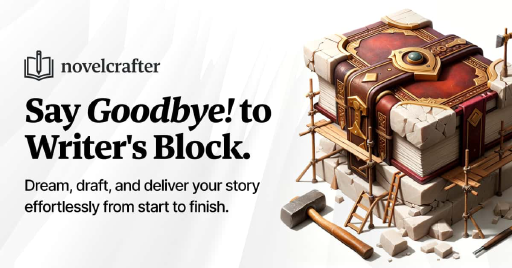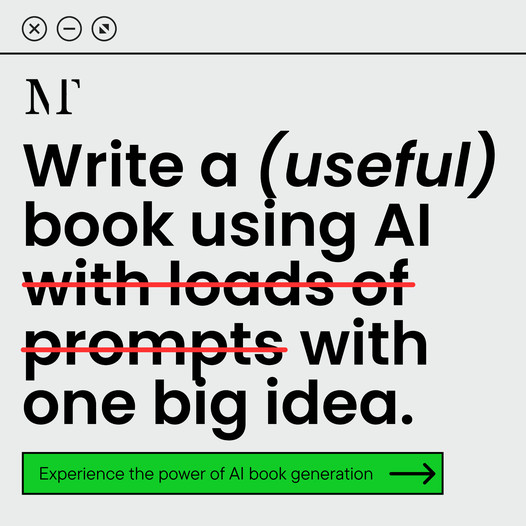Crafting a Compelling Antagonist
Nailing a memorable antagonist isn’t just a tick on your storytelling checklist. They’re the lifeblood of conflict, driving your hero to their limits and pushing them to become better versions of themselves—or not. If you truly grasp why your antagonist matters and what makes them pop off the page, you’ll turn up the intensity, making your narrative one to remember.
The Importance of a Well-Developed Antagonist
An antagonist ain’t just a bad guy. They’re the button pusher, triggering your hero’s upgrades and arcs. This human obstacle adds juicy layers of drama and gets your plot twisting in ways that keep readers hooked.
| Main Antagonist Roles | Explained |
|---|---|
| Conflict Driver | They throw tough challenges in the protagonist’s path. |
| Theme Marker | Their worldview helps shine a light on the big ideas in your story. |
| Protagonist Sparring Partner | Testing the main character, nudging them to change. |
Drop the ball on your antagonist, and you’re staring down the barrel of dull plots and flat characters. Spend some time pumping iron with your antagonist creation skills, and you’ll have tales that truly thrill.
Characteristics of a Memorable Antagonist
Want your antagonist to linger in readers’ minds long after they’ve closed the book? Check these traits:
| Trait | What It Means |
|---|---|
| Complexity | Give them layers—no cardboard cutouts. They should be just as nuanced as your hero. |
| Human Motives | Make their reasons believable. When readers connect with their goals, it makes their story much more engrossing. |
| Consistency | Keep them true to their own code, making the story feel more real. |
| Surprises Up Their Sleeve | Keep readers on their toes with some unexpected moves. |
| A Big Deal | If they don’t matter in your story, why would anyone care? Let them impact the hero’s journey in meaningful ways. |
Use these in your writing toolbox, and your antagonist will leap from a mere villain to a captivating character that sticks with your readers. For the nitty-gritty on character shaping, check out our piece on how to develop characters in a story.
While brainstorming your antagonist’s tale, remember that a strong backstory and understandable goals can elevate your story to heights you might not expect.
Understanding Motivations
Getting to the heart of why your baddie does what they do can transform them from a flat villain into a character readers just love to hate. It’s about showing the method to their madness. Let’s break down how to give your antagonist depth by digging into what makes them tick.
Digging into the Antagonist’s Motives
Kick things off by jotting down what drives your antagonist. It could be anything from a greedy power trip to some wacky world-saving mission. Use this handy table to help nail down their motives.
| Motivation Type | What’s It About | Example |
|---|---|---|
| Personal Gain | Chasing that wealth, power, or fame | They’re after the throne, stepping on the hero’s dreams. |
| Revenge | Settling old scores | They’re gunning for payback after being wronged in the past. |
| Ideological Views | Beliefs that fan their flames | They think they’re the hero fighting for a cause. |
| Fear | Scared of what might be lost | They’re clinging to power to dodge an uncertain future. |
| Protection | Guarding what they love | They’ll break bad if it means saving their kin. |
Figure out which ones hit home for your character, and let their backstory unveil why they’re so driven. This clarity will let you add layers to your character, painting them more than just the usual antagonist.
Creating Depth through Relatable Motivations
Your villain should hit home with readers in a way that gets them nodding, even if grudgingly. Try these tricks to flesh out those motivations:
 What Poetry Feels Like
What Poetry Feels Like-
Backstory Development: Cook up a juicy past to explain their motives—maybe it’s a rough childhood, a broken heart, or a game-changing event.
-
Sympathetic Qualities: Sprinkle in a few traits that make readers feel for them. It’s hard not to root a little for the guy who’s been kicked around by life.
-
Flawed Humanity: Let them wear their humanity on their sleeve—show those missteps and fears. Everyone loves a little crack in the armor.
-
Contradictory Values: Confuse us a bit—maybe they want love but keep on torching everything because of their hang-ups.
-
Realistic Ambitions: While they might be causing chaos, their endgame should hit home—fans are more likely to connect if they can see a little truth in the madness.
Work these angles to make your antagonist a three-dimensional force. If you’re hungry for more tips on bringing characters to life, peek at our guide on developing story characters. Bolstering your villain with real motivations won’t just give them a presence, it’ll send ripples through your whole plot, turning it into can’t-put-down material.
Establishing Conflict
You know what’s at the heart of any gripping tale? Conflict! The tug-of-war between the protagonist and their nemesis is what keeps us yearning for more. Here’s your guide to cranking up the heat and turning those pages fiery!
Building Conflict between Protagonist and Antagonist
The secret sauce for a spicy story? Set your main character and villain on a collision course with distinct goals. Inject some tension and watch your narrative soar! Check out what you need to stir the pot:
| What You Need | Why It Matters |
|---|---|
| Clashing Goals | Show what your main hero wants, and how the rival’s blocking their path. |
| Personal Stakes | Give it a personal twist. Think revenge, betrayal, or survival. Make it hit home. |
| Moral Dilemmas | Dive into good vs. evil. Maybe each side believes in their own truth, adding layers to the story. |
| Ramping Up Tension | Throw in more at stake. Challenge your hero to face and overcome their worst fears. |
By weaving these into your story, you’ll forge a conflict that’s as captivating as a nail-biting thriller.
Tension and Stakes in Antagonist-Driven Conflict
With conflict in play, keeping tension on high alert and stakes flying high is a must. This is what keeps readers hooked till the end. Check these out:
| What Works | Making It Happen |
|---|---|
| Raising the Bar | What’s at risk if the hero fails? Pump up those consequences! |
| Surprise Hurdles | Toss unexpected challenges in their path, just to make their mission a bit messier. |
| Epic Confrontations | Stir up to a do-or-die face-off where all boils down between hero and foe. |
| Switching Allegiances | Bring a twist with characters changing sides or forming unexpected alliances. |
Using these tricks keeps the energy up, the pages flipping, and readers glued to every word. Need more insight on keeping that tension alive? Swing by our guide on how to build tension in writing. Learn the nuts and bolts of crafting unforgettable adversaries with our advice on how to write a compelling antagonist.
Character Development
Crafting a bad guy who sticks in readers’ minds means putting in the groundwork to make them more than just a face for your hero to battle. Pulling this off involves shaping every detail till they’re layered like a delicious cake—one you sorta love to hate.
Fleshing Out Your Antagonist
Got your villain? Now give them a life! Start from their roots, dig into their past, and pin down personality quirks. Think of it as peeking into their diary; learn what makes them tick. You’ll want to look at things like:
| Aspect | Look Into This |
|---|---|
| Background | What was their childhood like? Any sibling rivalries, cool or grumpy parents? Moments that flipped their switch? |
| Motivations | What’s their carrot on a stick? Why are they causing chaos or peace? |
| Flaws | They’re not superhuman, right? Give them bits that make you nod like, “Yeah, they’re just like us.” |
| Relationships | How do they get along or not get along with others? Who do they trust or plot against? |
Sprinkle these insights in your story, so they stay fresh. Need more tips on building peeps out of thin air? Peek into our guide on how to develop characters in a story.
Balancing Complexity and Consistency
Sure, having layers is cool, but don’t get lost in the sauce. If your villain starts acting out of character, readers will call you out. Keep their style steady and relatable with these cues:
| Strategy | Description |
|---|---|
| Character Arc | Map out where they start and where they go. It’s about change, but not out-of-left-field change. Stay true to what you set up. |
| Logical Actions | Ever watched a movie and thought, “Wait, why’d they do that?” Avoid that. Keep their moves tied to real motives—stuff we can nod along with. |
| Consistent Voice | If they’re sarcastic, they should snark throughout. Their speech and deeds should be a seamless thread. |
Nail these down for that bad dude or dudette to captivate your audience—hook, line, and sinker. Want to polish your writing chops? Check out our tips on how to improve writing skills.
Writing Techniques
Making a villain that sticks with folks requires some serious craft. To do that, you gotta nail down two biggies: sharing the bad guy’s side of the story and flipping some clichés on their head.
Showcasing the Antagonist’s Perspective
Show folks why your nemesis is the way they are. Dishing out their point of view helps folks figure out what’s driving them to do what they do.
- Internal Monologue: Let readers peek into the antagonist’s head. This insight can help folks feel for them even if they don’t agree.
- Point of View Shifts: Switch up the narrative every now and then to give a glimpse from the antagonist’s shoes. It makes their character that much deeper.
- Backstory Integration: Drop bits about their past here and there to spell out how they ended up so twisted. A good story about where they came from makes them feel more real.
Example Table
| Technique | What’s It Do | Why It Works |
|---|---|---|
| Internal Monologue | Shows what they’re thinking/feeling | Pumps up empathy or clarity |
| Point of View Shifts | Let’s see the world through their eyes | Adds layers to the character |
| Backstory Integration | Weave in their origin story | Makes the baddie relatable |
Want more depth in your characters? Check out how to develop characters in a story.
Subverting Expectations and Stereotypes
Tired of run-of-the-mill villains? Let’s put a spin on that and keep readers on their toes.
- Unexpected Traits: Toss in some hero-like qualities or show their softer side from time to time to shake things up.
- Complex Goals: Give them reasons for their actions that aren’t just black and white. Allow motivations that make you go “Huh, they might have a point.”
- Redemptive Moments: Split-second decisions where they could do good or just kinder gestures. Keeps people guessing and makes them more interesting.
Example Table
| Strategy | What’s It Do | What It Changes |
|---|---|---|
| Unexpected Traits | Add heroic or vulnerable features | Deepens the character |
| Complex Goals | Craft motives reflecting moral gray areas | Blurs lines of right/wrong |
| Redemptive Moments | Instances of goodness or reconsideration | Adds depth to personality |
Eager to jumpstart your creativity? Take a look at our writing tips for fiction authors.
By weaving in these techniques, you can create a rich, compelling antagonist that’ll linger in readers’ minds long after the book cover’s closed.
Evolving the Antagonist
Crafting an antagonist that packs a punch means more than just setting them up against your main character. It’s about charting their growth through the storyline. Here, we dive into how an antagonist’s journey can unravel or redeem as the story closes.
Character Arc for Antagonists
A killer character arc can make your bad guy truly gripping. It offers a path that could mirror or clash with the hero’s tale. Check out these common arcs your baddie might follow:
| Arc Type | What’s It About | Main Traits |
|---|---|---|
| Redemption Arc | The bad guy owns up to their screw-ups and seeks a new leaf or forgiveness. | Vulnerability, Growth, Change |
| Fall from Grace | Their top attributes turn into their Achilles’ heel, spelling their doom. | Pride, Flaws, Ironic Twist |
| Unraveling | As time goes on, their plans get uncovered, cranking up the drama. | Unstable, Fear, Desperation |
These arcs bring depth, adding layers to your character. Watching the antagonist grow can shake up the story, spicing up conflicts and hooking readers.
Antagonist Growth and Resolution
Your antagonist isn’t just a cardboard cutout; they need to show growth that ties back to their motives and life events. Stirring in emotional and mind-bending moments make this happen. Give them those game-changing moments that question their beliefs or spark understanding.
Here’s how they might grow:
| Growth Type | What’s Happening | Example Scenario |
|---|---|---|
| Change of Heart | They start questioning their ways, maybe siding with the hero. | The villain finds common ground with the hero. |
| Acceptance of Loss | They take their loss on the chin, showing villainy isn’t all black and white. | An ex-ally bows out gracefully accepting their defeat. |
| Embracing the Role | They completely own their role, adding more layers and intrigue. | The bad guy believes they’re the hero of their own tale. |
Resolution ensures that the villain’s end isn’t just about payback. The wrap-up could see them facing the music or finding new purpose that somehow aligns with their core goals. For more on building characters, check out our piece on how to develop characters in a story.
In short, investing in your antagonist’s path can amp up your story. By weaving in character arcs and timely growth, your antagonist becomes not just interesting but rich and full-bodied, ratcheting up the tension and drama in your tale. Need more tips? Dive into topics like how to create believable villains and writing tips for fiction authors for some handy tricks.

 Grab my poetry book, 'we're all just wanderers in the end' Here
Grab my poetry book, 'we're all just wanderers in the end' Here AD: Your Book Finally Written...
AD: Your Book Finally Written...